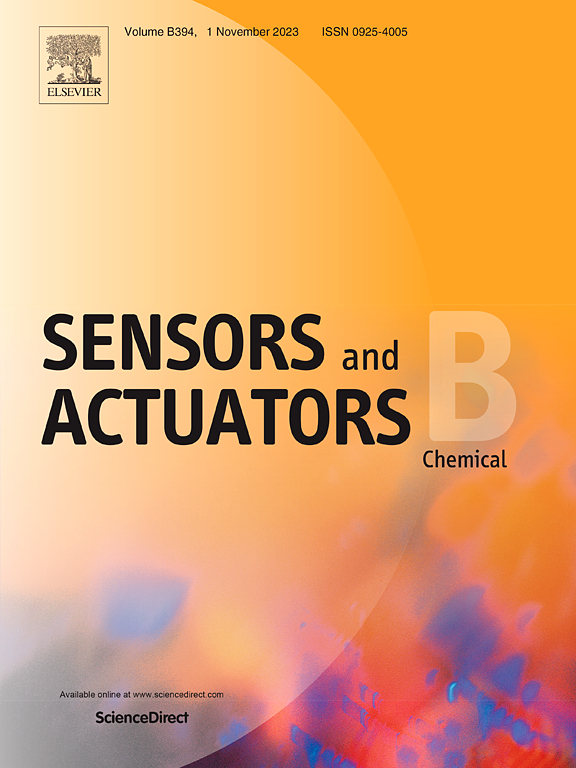Acetone sensing with In2O3: Spectroscopic insights into the surface phenomena
IF 8
1区 化学
Q1 CHEMISTRY, ANALYTICAL
引用次数: 0
Abstract
In2O3-based gas sensing devices were processed by screen printing In2O3 powders obtained by spray pyrolysis. The acetone (0.75–5 ppm concentration) sensing properties were measured at 250°C at several humidity values. The devices could provide an appreciable response even to the lowest acetone concentrations, and it was found that increasing humidity resulted in decreased response up to 30 % RH (atmosphere @ 26°C), after which no more changes were observed. Diffuse reflectance infrared Fourier transform spectroscopy (DRIFTS) was employed for studying in operando the surface chemistry of the devices. It was evidenced that the surface could be reduced and re-oxidized in N2 and 1000 ppm O2 concentration, respectively. DRIFTS study in H2, D2 and H2O/D2O demonstrated that the In2O3 surface was amenable to hydroxylation, enhanced by newly formed oxygen surface sites, and to reduction by humidity. DRIFTS studies in acetone evidenced that the hydroxylated In2O3 surface decomposes acetone resulting in hydroxyl consumption and adsorbed acetates The overall resulting consumption of surface oxygen is at the basis of the observed conductance increase in the gas-sensing tests. The sensing mechanism is therefore not based onto surface combustion of acetone.
丙酮感应与In2O3:光谱洞察到表面现象
采用丝网印刷的方法对喷雾热解得到的In2O3粉体进行气敏器件的制备。在250°C和几个湿度值下测量丙酮(0.75- 5ppm浓度)的传感性能。该装置即使对最低的丙酮浓度也能提供可观的响应,并且发现湿度增加导致响应降低到30% RH(大气@ 26°C),之后没有观察到更多的变化。利用漫反射红外傅立叶变换光谱(DRIFTS)对器件的表面化学性质进行了研究。结果表明,在N2和1000ppm O2浓度下,表面可以被还原和再氧化。在H2, D2和H2O/D2O中进行的DRIFTS研究表明,In2O3表面易于羟基化,新形成的氧表面位点增强了In2O3表面的羟基化,并且湿度降低了In2O3表面的羟基化。对丙酮的DRIFTS研究证明,羟基化的In2O3表面分解丙酮,导致羟基消耗和吸附的醋酸盐。在气敏试验中观察到的电导增加的基础上,表面氧的总体消耗。因此,感应机制不是基于丙酮的表面燃烧。
本文章由计算机程序翻译,如有差异,请以英文原文为准。
求助全文
约1分钟内获得全文
求助全文
来源期刊

Sensors and Actuators B: Chemical
工程技术-电化学
CiteScore
14.60
自引率
11.90%
发文量
1776
审稿时长
3.2 months
期刊介绍:
Sensors & Actuators, B: Chemical is an international journal focused on the research and development of chemical transducers. It covers chemical sensors and biosensors, chemical actuators, and analytical microsystems. The journal is interdisciplinary, aiming to publish original works showcasing substantial advancements beyond the current state of the art in these fields, with practical applicability to solving meaningful analytical problems. Review articles are accepted by invitation from an Editor of the journal.
 求助内容:
求助内容: 应助结果提醒方式:
应助结果提醒方式:


